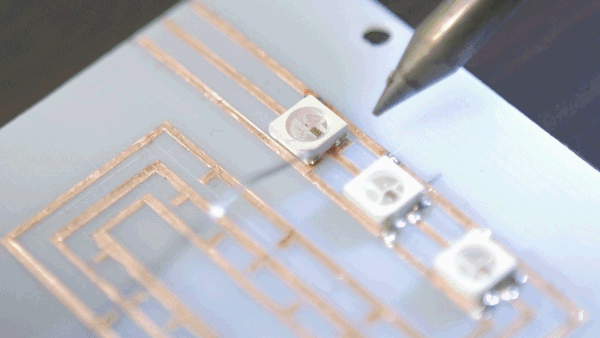Mike Senese is a content producer with a focus on technology, science, and engineering. He served as Executive Editor of Make: magazine for nearly a decade, and previously was a senior editor at Wired. Mike has also starred in engineering and science shows for Discovery Channel, including Punkin Chunkin, How Stuff Works, and Catch It Keep It.
An avid maker, Mike spends his spare time tinkering with electronics, fixing cars, and attempting to cook the perfect pizza. You might spot him at his local skatepark in the SF Bay Area.

Like many media outlets, Make: has an interesting relationship with crowdfunding projects — there are so many interesting ideas launching every day, but also so many examples of projects that are delivered late, and sometimes not at all. Because of this we usually stay away from coverage of new campaigns that come up. But once in a while we get to see something that excites us enough to sidestep our unofficial policy.
Last week, Ludwig Faerber and Ben Hartkopp from Berlin-based Next Dynamics stopped by to show us their about-to-launch-on-Kickstarter 3D printer, the NexD1. It’s a category that’s seen some incredible product launches over the years, including Printrbot and Formlabs, but similarly, some awful failures (Peachy Printer, I want my $100 back).
What caught our attention about NexD1 are two elements — first, it’s not your standard filament-based machine, but instead uses a polyjet-style printing system that places hardening layers of resin using a print head similar to an inkjet. This type of printer is more commonly associated with Stratasys’ printers like the Objet line, which create wonderful, extremely high-quality prints usually for high-end professional design purposes. They’re not cheap, starting around $20,000 and getting up to almost $1 million for the largest-format versions. Ben and Ludwig came to us promoting NexD1 at a price closer to home printers — retailing for $5500 but dipping as low as $2500 for their early bird rewards.
The other element that caught our attention is the multi-material aspect of the machine, especially the conductive resin. They designed this machine primarily to be used for electronics prototyping, letting the user quickly print multi-layer PCBs. The machine we saw has three bins for resin cartridges, which can range in color and firmness, and also includes a jelly-like, water-soluble support material that crumbles away. With this printer’s ability to mix materials, you can dial in different colors and shades, and also varying levels of firmness. These resin cartridges will cost anywhere from $15 to $100, and the team says the machine will even be able to use other manufacturer’s materials, such as the dental resin from Formlabs.
Put the material mixing together with the conductive resin and someone creative can start building flexible circuits, which the team claims to have tested successfully, and even make three-dimensional circuitboard creations (it has a bed size of about 8″ x 8″ x 8″). The machine will accept designs from standard circuit-design software like Eagle or Circuits.io to allow for rapid board prototyping, but the team explains that right now the software to make 3D circuit designs is extremely limited. As for trace and pitch spacing, the team responded that its specs allow for 10 micron printing, although we didn’t see any examples yet of ultra-tight component layouts.
As with any Kickstarter, delivery timeframes are chancy. Next Dynamics is stating November of 2017 to complete shipping for their backers, but also seem to accept that obstacles slow these things down. In their case, they brought us their fourth machine iteration, a refined build with a nice 10″ touchscreen interface. But they’re now at work on version five for their backers, which may end up with six resin bins.
And there’s always a chance of unseen hiccups getting in the way. Stratasys’ patents have been expiring, but they may still fight for sole possession of this type of technology, which would be a big setback (they’ve gone after Formlabs and Afinia in the past, among others). Next Dynamics also states that they’re able to keep the pricing so low because they’ve designed their own print heads instead of having to purchase expensive units from big, traditional printer makers like Ricoh.
But the promise of bringing this type of printer to the home market, and adding to it the ability to print conductive materials into various shapes and levels of hardness, has us very excited. We’ll be watching where this goes.
Mike Senese is a content producer with a focus on technology, science, and engineering. He served as Executive Editor of Make: magazine for nearly a decade, and previously was a senior editor at Wired. Mike has also starred in engineering and science shows for Discovery Channel, including Punkin Chunkin, How Stuff Works, and Catch It Keep It.
An avid maker, Mike spends his spare time tinkering with electronics, fixing cars, and attempting to cook the perfect pizza. You might spot him at his local skatepark in the SF Bay Area.
ADVERTISEMENT
Join Make: Community Today












